10 ways to organize a kid’s room – so it stays neat and tidy
Organizing a kid’s room the right way ensures they have the perfect place to play and unwind – here’s how the pros do it
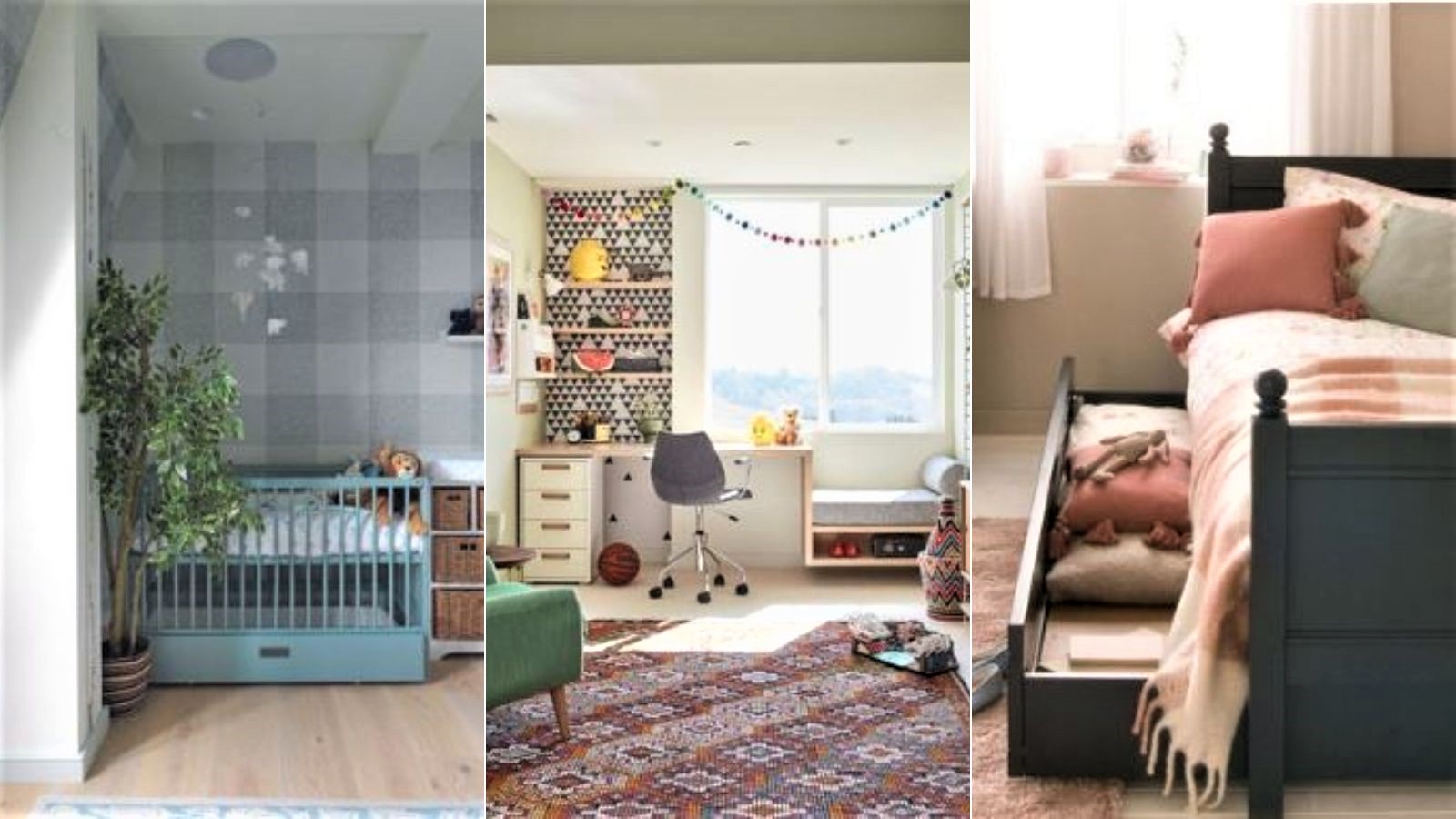
Whether you share your home with tots, teens or in-betweens, keeping on top of tidiness can be a constant battle, but organizing a kid’s room so you all know what goes where should make things easier. Whether it’s school work, soft toys or a favorite game, ensuring easy access to the things they need encourages independence – and gives you a bit of a break too.
Your little ones might not agree, but the best kids' room ideas are those that aren’t full of toys – fact. Studies show that when a child’s environment is calm and organized, they’re more likely to be, too, so streamlining their space is actually one of the best things you can do for your child.
Even with separate playroom ideas, clutter can build up fast. If you want to stand a chance of staying on top of it, you’ll need to get your kids on board too. No easy task, we admit. However, simple, easy-to-follow organization strategies, along with some cute bedroom storage ideas, should do the trick. We’ve listed our favorites below to give you a head start.
How to organize a kid’s room
‘Keep in mind that not all children (or people in general, for that matter) are natural organizers and their room will likely require light maintenance throughout the year. Don’t let this put you off though – having a great baseline makes all the difference. Even if things get a little cluttered or messy, it's significantly easier to get back to a more organized place if you’ve done the leg work and have simple systems in place’, says NYC-based professional organizer Amanda Wiss, founder of Urban Clarity.
1. Take a less is more approach
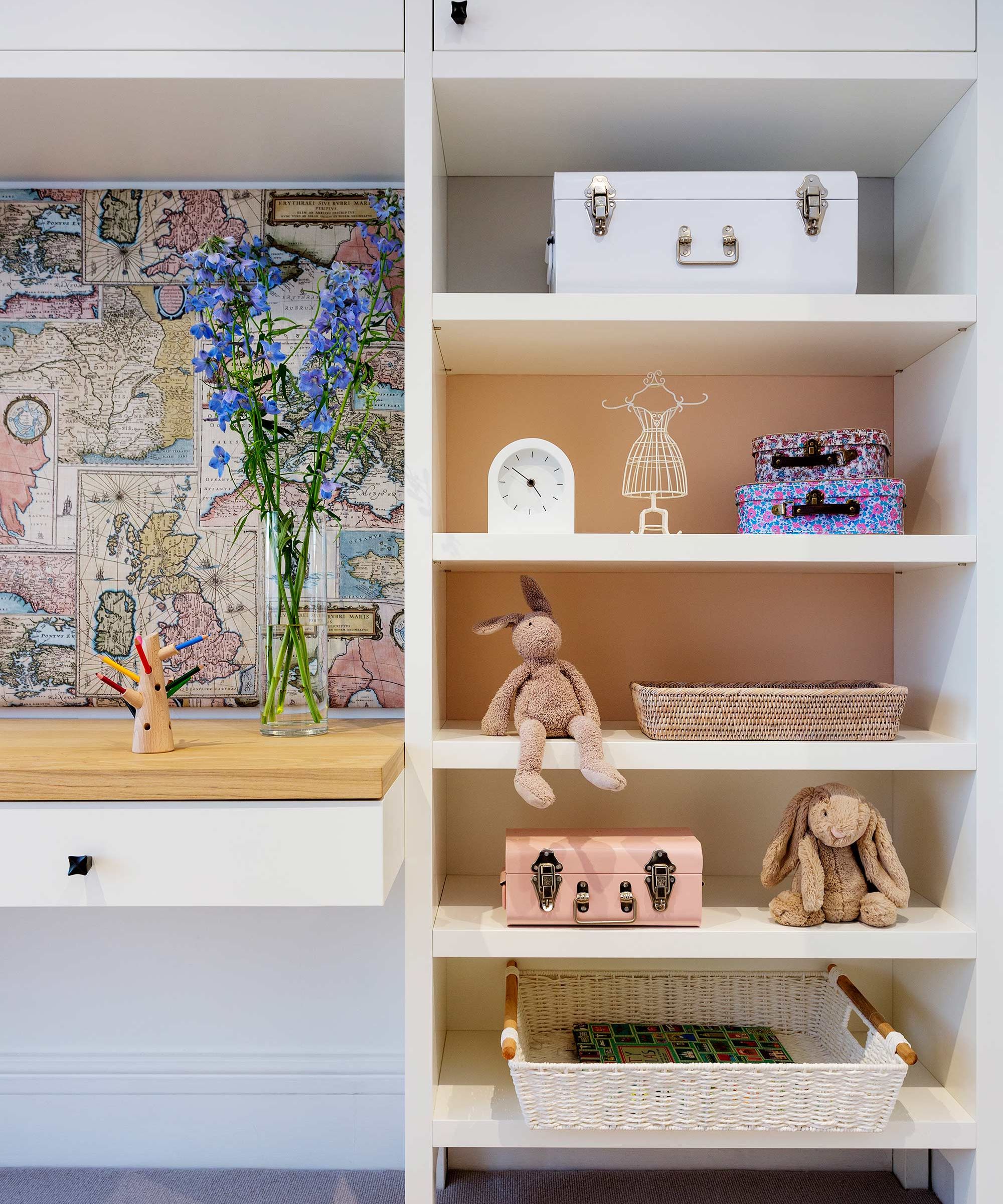
Decluttering kids' rooms is the best place to start. This can be an emotional process for both you and your little ones, particularly when it comes to organizing toys. But don’t be fooled into thinking ‘the more the better’.
Just like adults, children can become overwhelmed and overstimulated by too many things. The more streamlined and clutter-free a child’s room is, the more capacity there is for creative play, not to mention a restful night’s sleep. Keeping this at the forefront of your mind should make it easier for you to let go, which should make your child more comfortable with it, too.
2. Include your children
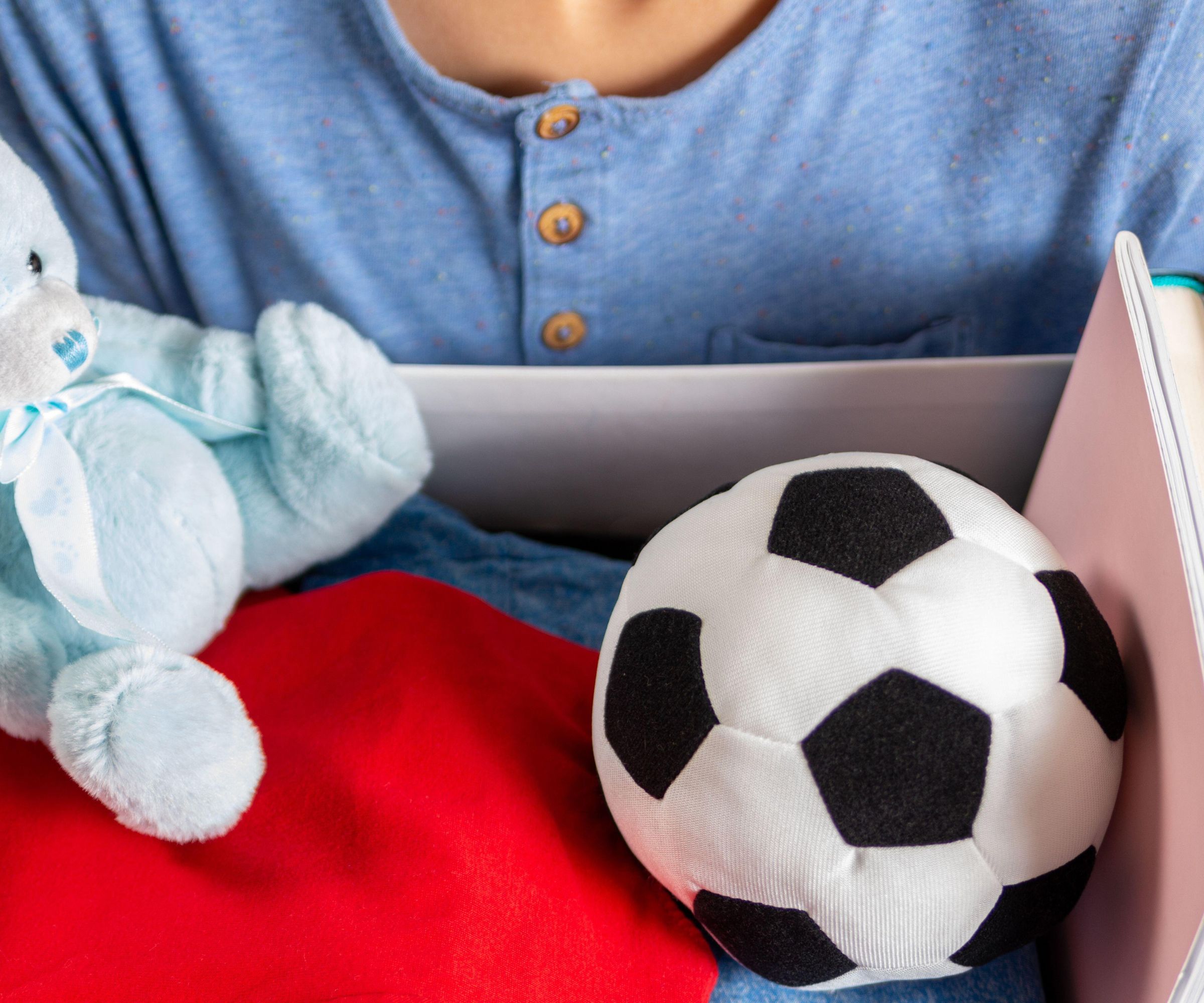
Organizing a kid’s room may feel like a chore best saved for when they’re not around, but it’s important to remember that a child’s bedroom is their safe space. The things they surround themselves with often have a high amount of emotional significance – even if you don’t see it. For that reason, it’s important you involve your children in the process, particularly when it comes to decluttering toys.
‘While it doesn’t hurt for a grown-up to initiate decluttering, including children is important if you don’t want them to fear the process in the future. Getting them involved will help them get used to the feeling of letting go’, says professional organizer Vicky Silverthorn, founder of You Need a Vicky.
‘If you’re donating items, explain the importance of sharing and giving; donate toys to charity shops, nurseries or family centers so your kids know they’re going to make other children happy’, she adds.
3. Start with surfaces
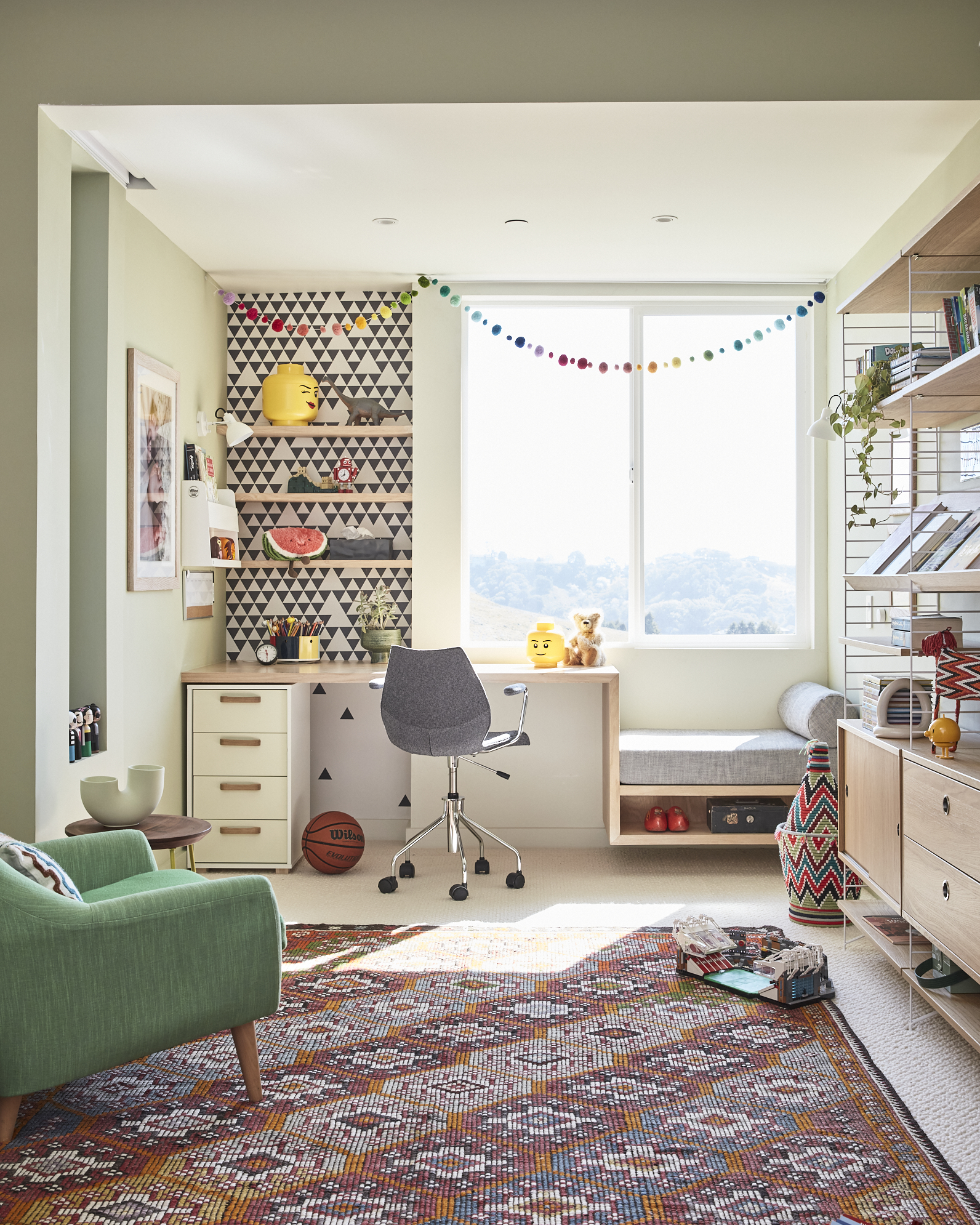
Organizing a child's bedroom can be an overwhelming process for you and your little ones, and is certainly not one you should attempt to do in a day. However, there’s no denying that a clutter-free bedroom can have all manner of positive effects on children, from how enjoyable their play is to how well they sleep at night, so we can understand you wanting visible results quickly. If that’s the case, experts advise starting in plain sight.
‘Whether it’s a desk, dresser or bedside table, surfaces in children’s bedrooms can quickly become catch-alls, and cluttered ones at that. Your first task should be to sort and remove items that don’t need to be there, and organizing those that do. This automatically creates a calmer, more streamlined energy within the space, leaving you free to tackle the rest of the room without any pressure’, says Amanda.
4. Categorize and group items
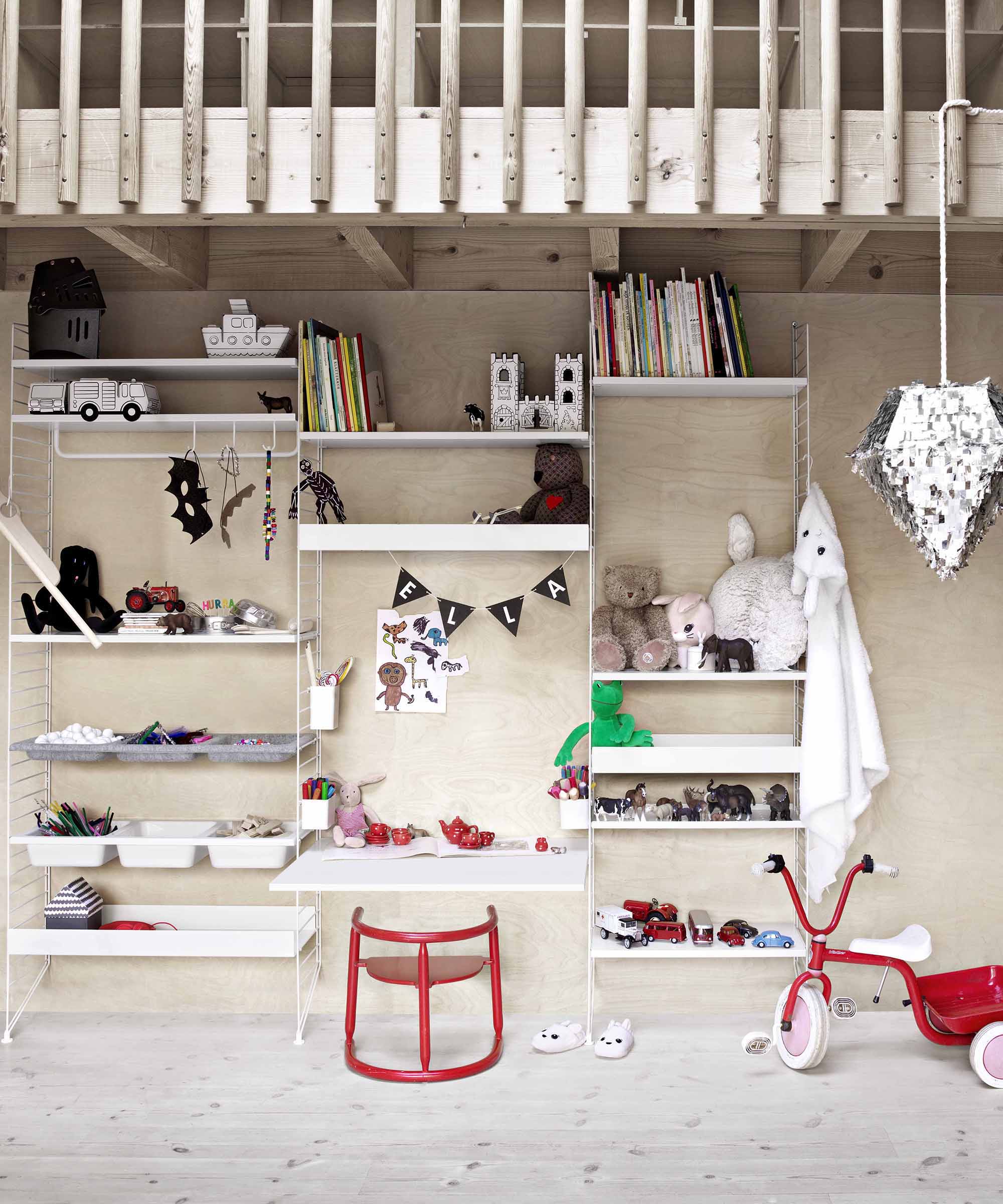
A useful organization method (that can be used when organizing a playroom too) is to group items by category. While most areas you can do by yourself, tackling toys is best done with your child. ‘To make things fun, add a sense of competition by assigning types of toys and racing to see who can complete their category first!’, says Amanda.
Once all have been categorized, you’re in a good position to work out which are really still played with. Take the opportunity to cut back on duplicates too – try to limit to just a few types of each and donate any extras, as well as any that your children have outgrown.
5. Create defined zones
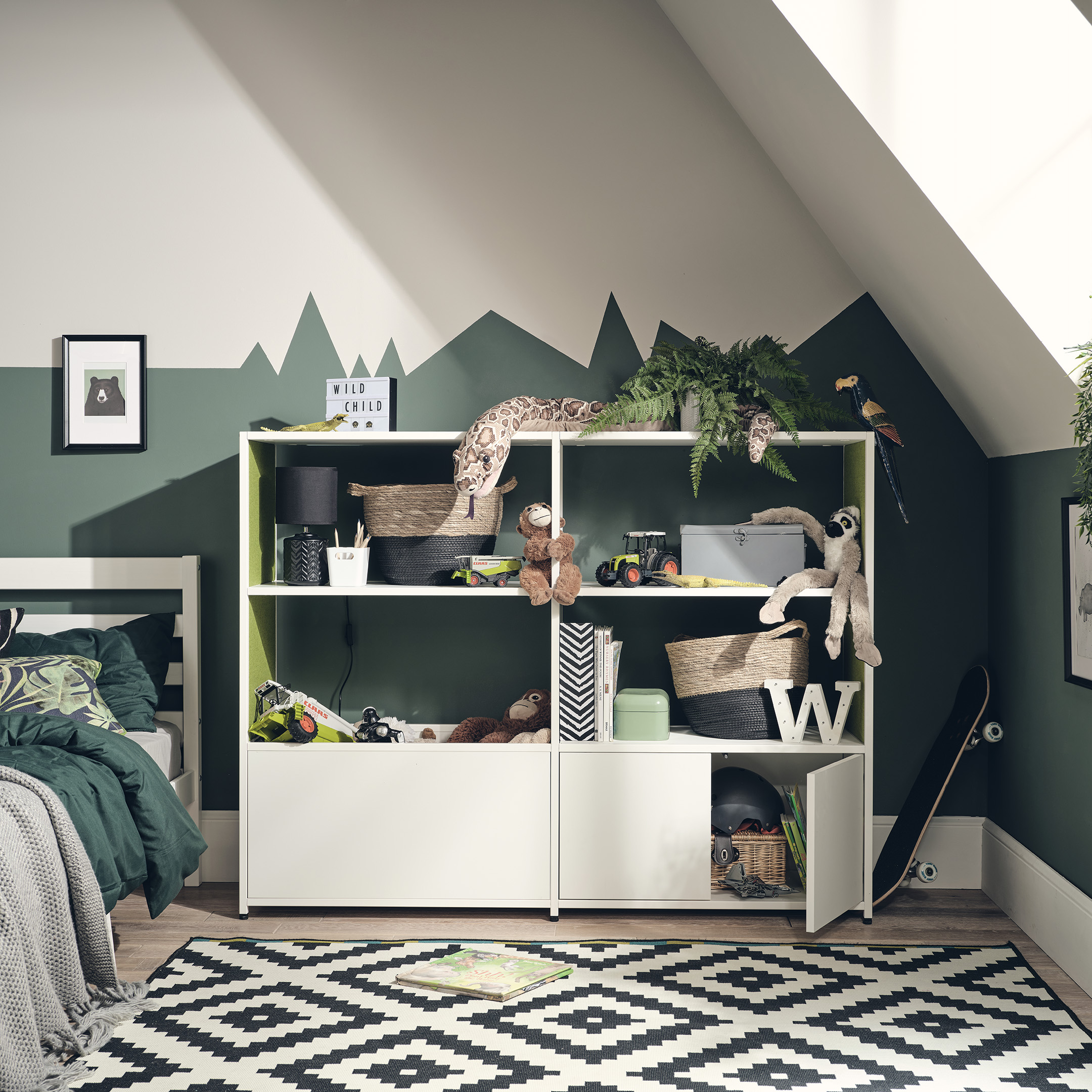
In the same way you would when organizing a bedroom for yourself, think about how your little ones use the space and arrange items accordingly. Designating areas for sleeping, dressing, playing, studying and so on gives structure to the room, plus makes it clear what belongs where, which should help you stay on top of organization going forwards.
6. Box things up
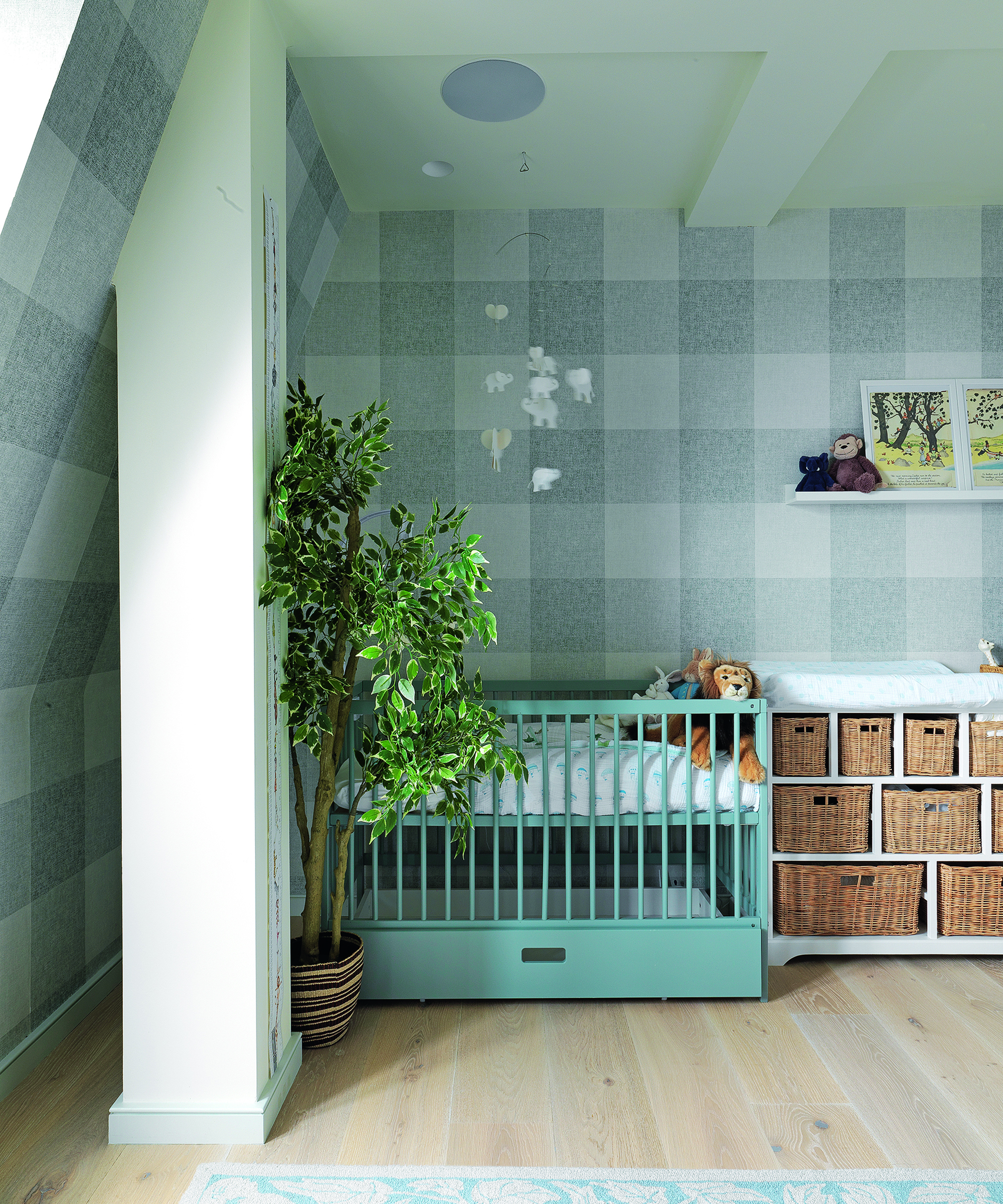
When it comes to kids' bedroom storage ideas – or playroom storage ideas, for that matter – boxes and containers are your best bet. While fabric or woven designs are aesthetically pleasing, clear plastic is more convenient as they can see what’s inside at a quick glance, and lidless options make tidying up much easier, too. Compartmentalized boxes are great for storing toys with lots of little parts, such as Lego or board games, or you could always add little boxes inside cube storage if you’re using a modular unit.
7. Put a label on it
Whether you’re organizing toys, books, school supplies or organizing children's clothes, labeling storage not only makes it easier for you to remember where things go, but your children, too. Keep categories broad to avoid confusion and always bear in mind the age of your child. Add a picture alongside the word if they aren’t quite at reading level yet, or if you’ve got multiple children in different school years.
8 Look for ‘hidden’ storage opportunities
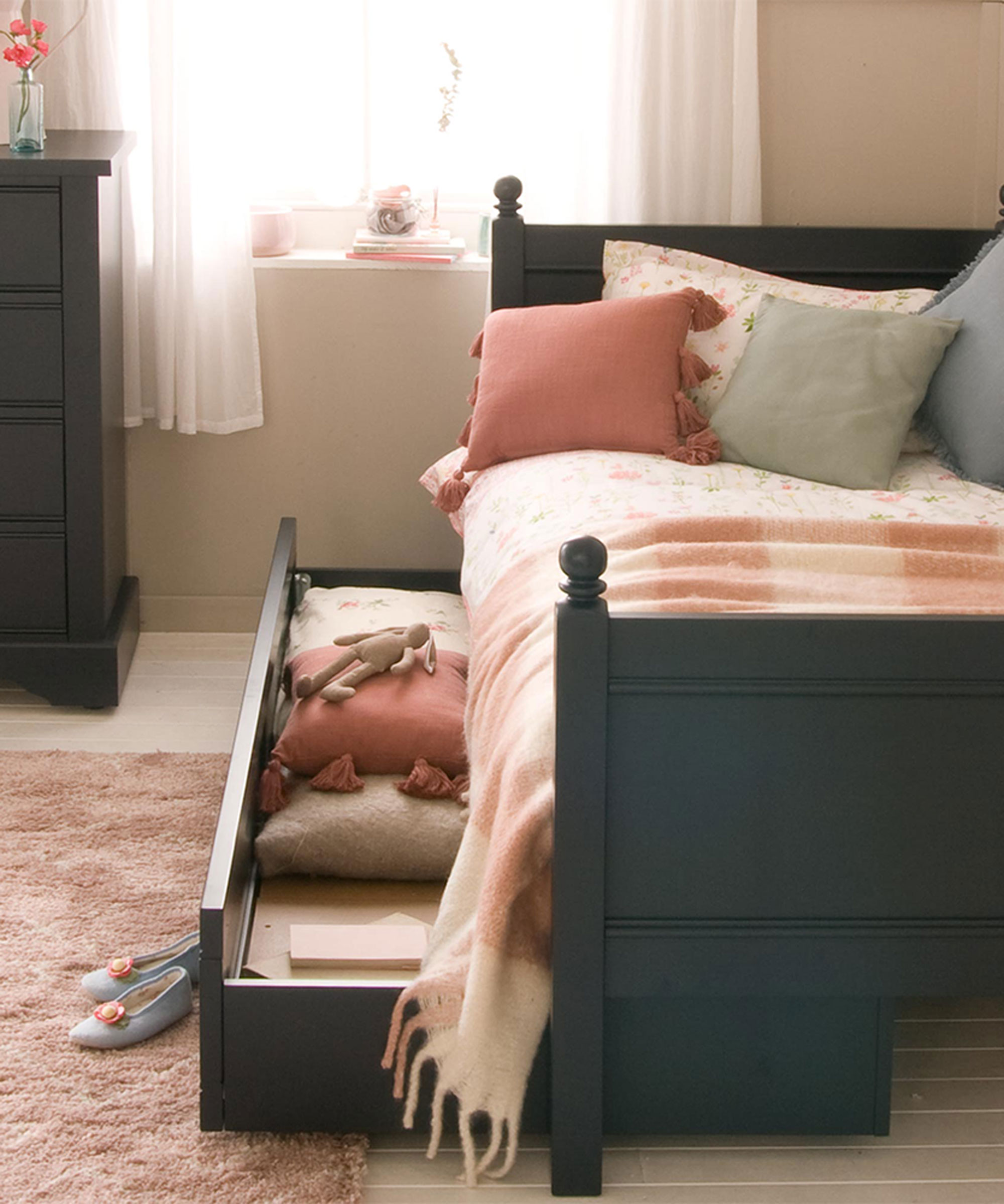
It’s all well and good knowing how to organize toys and clothes properly, but it’s counterproductive if you’ve not enough storage for them. Along with your usual toy storage ideas, there’s plenty of ways to utilize hidden space; underbed storage, such as rolling bins with lids, such as these sturdy ones from Amazon, hooks on the back of the door, the top of a closet and so on.
A set of shelves in the playroom can be transformed into a focal point with a few carefully chosen items, as well as being practical too. Add photos, books and a few wooden décor items alongside toys, books, dressing up outfits and anything else you want to keep within easy reach.
‘Made-to-measure storage makes the most of the space, particularly in a bedroom that’s on the smaller side. As it’s tailored to your home, it can be designed to work round any quirks, such as a sloping ceiling or an awkward corner. Another tip for a small room is to build storage all the way to the ceiling, making use of what would otherwise be dead space. Use the top shelves to stash stuff your kids don’t need or play with regularly’, advises Irene Gunter, founder of Gunter & Co.

Irene studied Art History before training at the prestigious Inchbald School of Interior Design. As Creative Director of Gunter & Co, Irene oversees the design for every project alongside her team of designers who manage the day-to-day implementation. Inspiration for each project comes from a myriad of sources: from historical architectural details to contemporary building materials or vintage furniture to contemporary sculptures. She centers her designs around the tension between organic forms and regular repetition to create spaces that catch the eye, are thought provoking and packed with interesting talking points.
9. Dedicate space to ‘collections’
Children love collecting things. twigs, pennies, postcards, Lego models, craft creations… no matter how insignificant it is, it is absolutely not counted as clutter. Not in your children’s eyes anyway, and that’s what matters. Getting rid is not an option, but neither is allowing these collections to get out of controls, designate space right from the off.
‘These sorts of items shouldn’t sit alongside toys, so assign a storage box (try and limit it to just one) solely for "collections" and keep it somewhere accessible, so your little ones feel like it’s "theirs". Cleaning up becomes a lot simpler too if you’ve got a designated space for non-classified items’, says Millie Hurst, section editor at Homes & Gardens.

Millie Hurst is Section Editor at Homes & Gardens, overseeing the Solved section, which provides readers with practical advice for their homes. Millie has written about and tried out countless cleaning and DIY hacks in the six years since she became a journalist, and has worked in both London and New York.
10. Teach tidiness
It’s actually pretty easy to organize a kid’s room – the hard part is ensuring it stays that way. Especially when it’s not you that needs to put in the groundwork. If you want to maintain a tidy space, it’s vital that you encourage your children to stick to the systems you’ve put in place. Whilst it’s tempting to do the job for them, you're not doing you – or them – any favors. They’ll thank you for it later in life, even if they don’t right now!
FAQs
How do I organize my kid’s room with too much stuff?
While investing in extra storage might seem like the quick and easy solution, we’d first ask whether your child really needs all the stuff that’s currently residing in their bedroom. Ask them and the answer will be yes, but the reality is likely no, so the first place to start is with a good declutter.
Whilst it’s okay to declutter for children under three, bear in mind that older children should be included in the process, it is their stuff after all! Keep sessions short and be patient – it can be an emotional time for them, but the results are well worth it.
If you’re still struggling for space even after a good sort out, think about ways you could incorporate more storage into the room – bespoke shelving, underbed bins, behind-the-door hooks, stackable boxes in the bottom of a closet… there’s plenty of options. Rather than throw everything in together, take the time to categorize items. This makes it easier for your children to find what they need, and makes tidying up less of a chore, too.
So as you can see, organizing a kid’s room is child’s play really, the hard part is keeping it that way. Accessible storage and simple systems are key; few children are born organizers, so it’s really up to you to help them learn the art of tidiness. Resistance is inevitable, but keep going – they’ll thank you for it one day!
Sign up to the Homes & Gardens newsletter
Design expertise in your inbox – from inspiring decorating ideas and beautiful celebrity homes to practical gardening advice and shopping round-ups.
For 10 years, Tara King worked as a Content Editor in the magazine industry, before leaving to become freelance, covering interior design, wellbeing, craft and homemaking. As well as writing for Ideal Home, Style at Home, Country Homes & Interiors, Tara’s keen eye for styling combined with a passion for creating a happy – and functional – family home has led to a series of organization and cleaning features for H&G.
-
 This simple marble hack elevates my budget-friendly wooden kitchen countertops and prevents the dreaded water damage for way less than you’d think
This simple marble hack elevates my budget-friendly wooden kitchen countertops and prevents the dreaded water damage for way less than you’d thinkThis design trick looks expensive, solves a problem, and was the easiest decision I made during my kitchen reno
By Charlotte Olby Published
-
 Emily Blunt gifted Cillian Murphy this $545 pillow – she's 'obsessed' with these luxury pillows, and frankly, so are we
Emily Blunt gifted Cillian Murphy this $545 pillow – she's 'obsessed' with these luxury pillows, and frankly, so are weThe Oppenheimer stars sleep on this ultra-luxe goose down pillow – here's why we love it – plus our affordable alternatives from $35
By Sophie Edwards Published